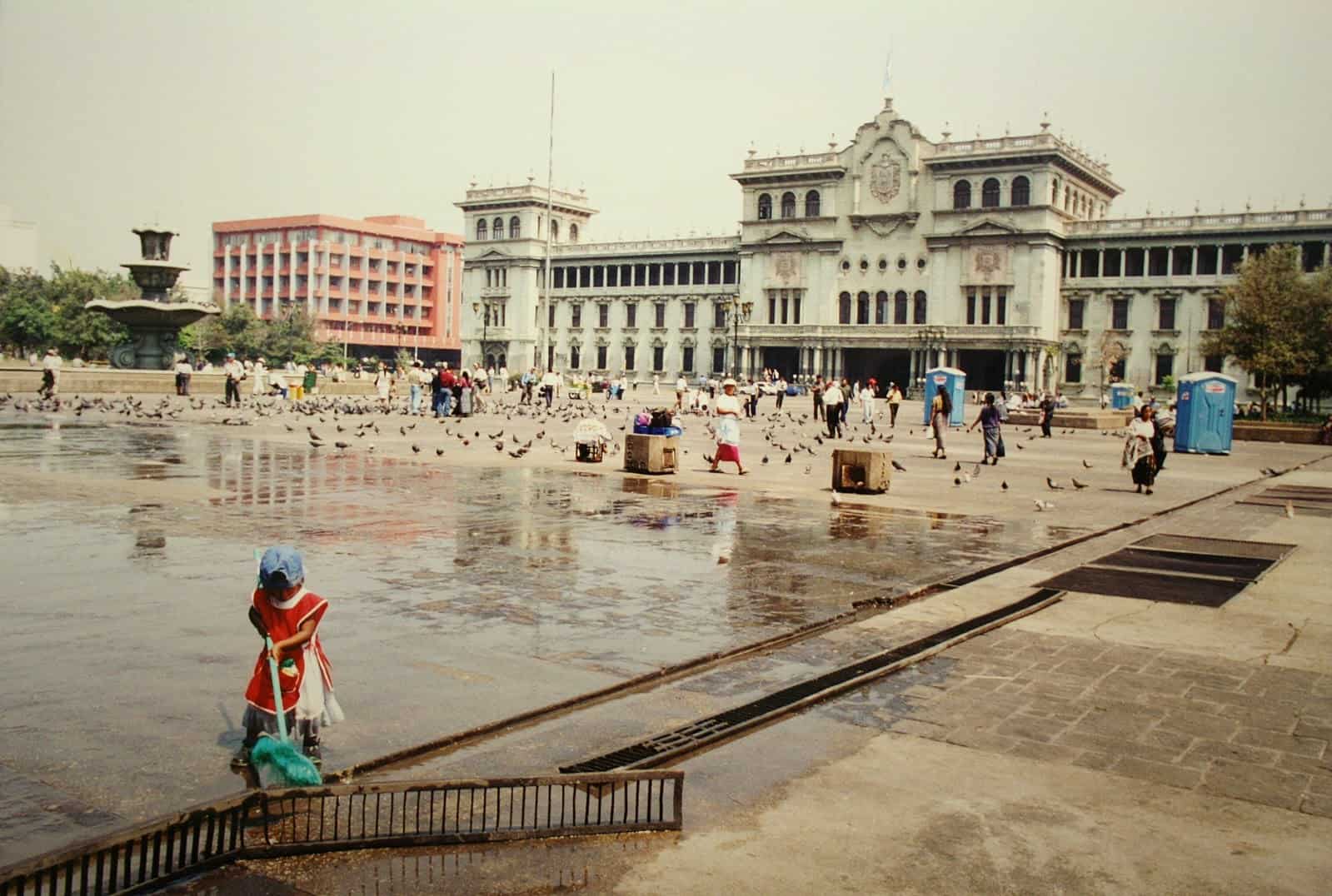For policymakers to make the right decisions, it is crucial that they first have the right information. With this in mind, career U.S. Agency for International Development (USAID) officer Terrence Brown used his position as the USAID Mission Director in Guatemala to correct discrepancies in diplomatic reporting on the Guatemalan political economy in the early 1990s.
Thanks to his leadership, USAID provided policymakers in Foggy Bottom with a more accurate picture of Guatemala’s economic reforms in the midst of a 36-year-long civil war.
In June of 1990, the Guatemalan military killed Michael DeVine, a U.S. citizen living and working in Northern Guatemala. In response to DeVine’s death—as well as other human rights violations—the U.S. government suspended Foreign Military Funds to Guatemala in December of 1990. Five years later, however, the New York Times reported that the Central Intelligence Agency was continuing to surreptitiously fund the Guatemalan military in an effort to support the army’s crucial role in the war on drugs.
As the CIA was providing this funding, Mr. Brown received a call from Ambassador James Michel, then serving as the USAID Assistant Administrator for Latin America and the Caribbean, raising concerns about apparent contradictions between CIA reporting to Washington on the Guatemalan political economy and that of USAID. Knowing the effect that these discrepancies could have on policy, Mr. Brown lobbied to include a USAID economist in the review process of CIA economic cables in order to give context to CIA reporting. As a result of Mr. Brown’s efforts, USAID could better inform the CIA reporting and eliminate the flow of conflicting information to Washington.
Terrence Brown’s career began in 1971 when he became an International Development Intern for USAID. He continued to work with USAID for nearly thirty years, serving in posts across Latin America and the Caribbean until his retirement from USAID in 2000. However, he could not stay away from USAID for long, and ultimately returned to USAID to work as a Policy Bureau Contractor from 2011 until 2018.
Terrence Brown’s interview was conducted by Carol Peasley on July 20, 2018.
Read Terrence Brown’s full oral history HERE.
For another moment on the U.S. policy toward Guatemala, click HERE.
Drafted by Abby McCarter
ADST relies on the generous support of our members and readers like you. Please support our efforts to continue capturing, preserving, and sharing the experiences of America’s diplomats.
Excerpts:
“We knew the Guatemalan military had been involved in the murder of a U.S. citizen resident in Northern Guatemala, and we had announced termination of USG assistance to the military. It later came out in the U.S. press that the CIA was continuing to support them.”
Human Rights Violations and the Death of an American Citizen: Violations of human rights and extrajudicial killings were still actually going on. The violence level had gone down but the civil war continued and there were areas in that country that we couldn’t go at all; they were still either controlled by the guerrillas or conflict zones….
Many of our core country team meetings would be about our relationship with the Guatemalan military, because the core country team included the Station Chief, as well as the military attaché and DOD (Department of Defense). We knew the Guatemalan military had been involved in the murder of a U.S. citizen resident in Northern Guatemala, and we had announced termination of USG assistance to the military. It later came out in the U.S. press that the CIA was continuing to support them.
Conflicting Reports: One of the curious things was that the CIA was doing economic reporting cables to Washington, including about USAID assistance, that I never saw. I got a call from Jim Michel, who was then Assistant Administrator for LAC, asking had I seen the CIA cables? Nope. The problem was the apparent contradiction between USAID and CIA reporting on the Guatemalan political economy….CIA was basing its reporting on a source inside the Guatemalan government who they obviously did not want to reveal.
Setting the Record Straight: I sat down with the ambassador and asked if the USAID economist could provide input into their messages so at least there was some consistency in economic reporting from the same embassy….In the end we did get to comment, and in some cases, modify their content based on the quality of our economist’s input without compromising their source.. It was a ‘win-win’ for the ambassador by eliminating the conflicting reporting to Washington….The economist on the USAID staff has a PhD and was both insightful and articulate. I think we had some influence in balancing the kind of reporting the CIA was doing, or at least putting additional context within those reporting cables to at least not have this sort of stark contrast between what USAID was reporting and what was being reported elsewhere in the country team.
TABLE OF CONTENTS HIGHLIGHTS
Education
BA in Political Science and Economics, Kalamazoo College 1965–1969
MA in Law and Diplomacy, Tufts University 1969–1971
Joined USAID 1971
San Salvador, El Salvador—Loan Office Director 1973–1976
La Paz, Bolivia—Loan Office Director 1979–1980
Guatemala City, Guatemala—Mission Director 1990–1993

